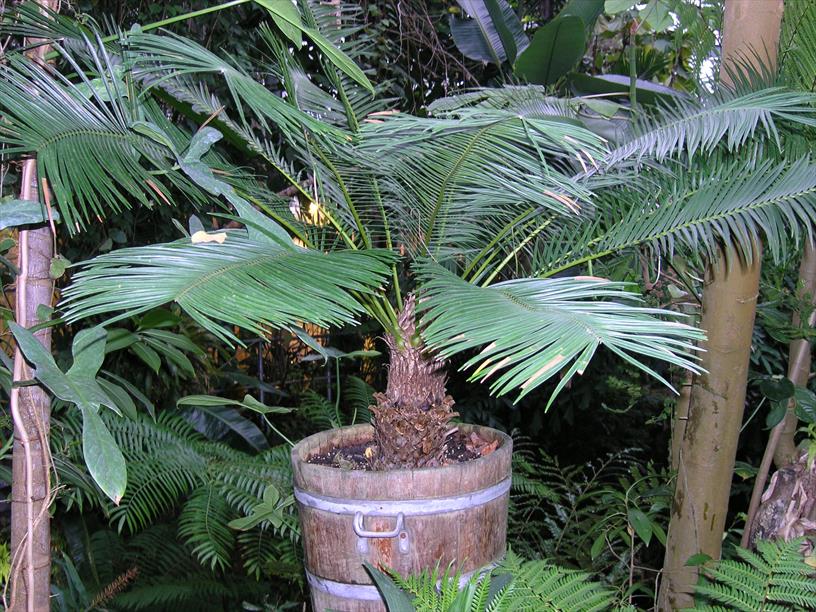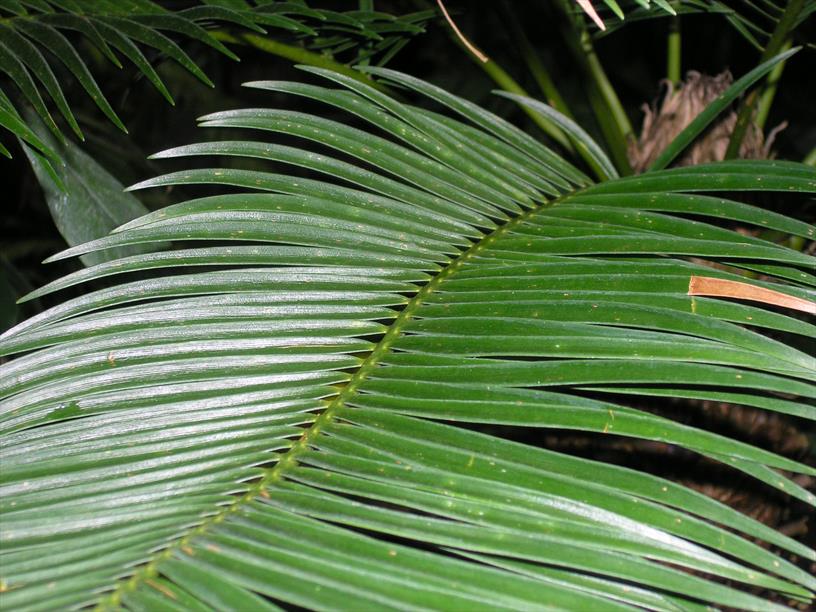Palma Corcho
Microcycas calocoma
Cycad family (Zamiaceae)
Mesmerised by beauty
When Friedrich Miquel – the director of the Amsterdam Botanic Garden in the 19th century – first saw this cycad in 1851, he was mesmerised by its beauty: “Espèce très distincte, l’une des plus belles du genre”. He assumed that the plant belonged to the genus Zamia and gave it the name Zamia calocoma. The name calocoma comes from the Greek word calos (beauty) and come (crown of hair).
On further study, in 1861, he realised that it wasn’t a Zamia but a separate genus of cycads – Microcycas (small cycad). Characteristic for Microcycas is that all the leaflets are equally long giving it the appearance that the tops of all the leaves had been cut off.
Read more.... »Themes
When Friedrich Miquel – the director of the Amsterdam Botanic Garden – first saw this cycad in 1851, he was mesmerised by its beauty: “Espèce très distincte, l’une des plus belles du genre” (a very distinct species, one of the most beautiful in the genus). He thought the plant belonged to the genus Zamia and gave it the name Zamia calocoma. The name calocoma comes from the Greek word 'calos' (beauty) and 'come' (crown of hair). On further study ten years later he realised that it wasn’t a Zamia but a separate genus of cycads – Microcycas (small cycad). The distinct characteristic of Microcycas is that all the leaflets are equally long giving it the appearance that the tops of all the leaves have been cut off.
Details
| Description: | Tree, cycad up to 10 m tall and up to 0.60 m in diameter, dioecious. |
|---|---|
| Distributions: | West cuba |
| Habitat: | Dry, acidic, clay soils but also on calcareous soils. |
| Year cycle: | Perennial (polycarpic evergreen) |
| Hardiness: | 41 - 50 f (heated glasshouse - warm termperate) |
| Flowering period: | Mei - oktober |
| Flower color: | Not applicable |

